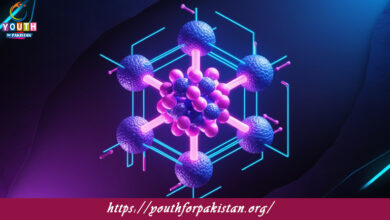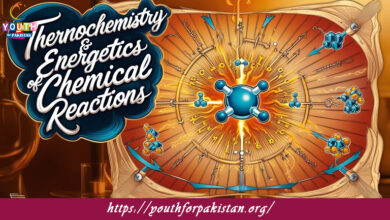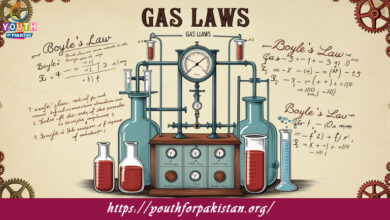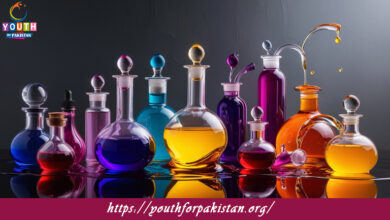State Of Chemical Equilibrium MDCAT Quiz with Answers
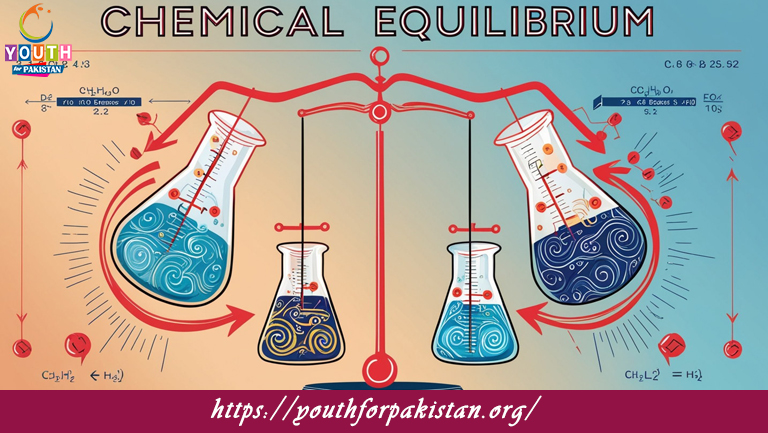
State Of Chemical Equilibrium MDCAT Quiz refers to a state in a chemical reaction where the concentrations of reactants and products remain constant over time. This is because, at this point, the rates of the forward and reverse reactions are equal, so there is no net change in the amount of reactants or products. It is important to note that the equilibrium does not mean the reactions have stopped; rather, both the forward and reverse reactions proceed at the same rate, resulting in a dynamic equilibrium. The state of equilibrium is very important for MDCAT students to understand, as it explains how chemical systems respond to various changes in conditions.
Characteristics of Chemical Equilibrium
Dynamic Nature: At equilibrium, the rates of the forward and reverse reactions are equal and opposite in direction. Although no visible change is taking place in the concentrations of reactants and products, the system is said to be in a state of “dynamic equilibrium.”
Constant Concentrations: Although this reaction continues in both directions, the concentrations of the reactants and products remain unchanged at equilibrium. This does not preclude the possibility of the concentrations being unequal; it merely means that they reach certain stable levels.
Le Chatelier’s Principle: Le Chatelier’s Principle states that when a system at equilibrium is subjected to a change in concentration, temperature, or pressure, the equilibrium will shift in a direction tending to counteract the change. This helps predict how the equilibrium will respond to various stresses.
Factors Affecting Chemical Equilibrium
Concentration: The addition or removal of any reactants or products will shift the equilibrium position. For example, the addition of more reactant will shift the equilibrium toward the product side.
Temperature: Increasing the temperature will favor the forward reaction in an endothermic process and the reverse reaction in an exothermic process.
Pressure: Changes in pressure affect reactions involving gases. For reactions with different numbers of gas molecules on each side, increasing pressure will shift the equilibrium toward the side with fewer gas molecules.
For MDCAT students, the state of chemical equilibrium is very important in solving problems related to reversible reactions, equilibrium constants, and the effects of different factors on equilibrium. These topics are always tested through the MDCAT Quiz and are very vital in answering questions related to them in the exam.
MDCAT Test on State of Chemical Equilibrium
The MDCAT Quiz on the State of Chemical Equilibrium seeks to test students’ knowledge in attaining chemical equilibriums and what influences such equilibriums. The questions may involve calculation of equilibrium constants, the application of Le Chatelier’s Principle to predict shifts in equilibrium, and the interpretation of equilibrium data implications. Practicing this quiz would help students fortify their equilibrium concept and be well-prepared for questions related to this in the MDCAT exam.
Free Flashcard for State of Chemical Equilibrium
Our Free Flashcard for the State of Chemical Equilibrium is designed to be a quick summary of the important points: dynamic equilibrium, the concept of equilibrium constant, and how different factors affect equilibrium. It also underlines important principles like Le Chatelier’s Principle and how to use it in predicting changes in equilibrium. These flashcards will allow students to quickly review the material and have a better understanding of chemical equilibrium before the MDCAT exam.

The state of chemical equilibrium is achieved when the __________ of reactants and products remain constant.

In a dynamic equilibrium, the rate of the forward reaction is __________ to the rate of the reverse reaction.

At equilibrium, the concentrations of reactants and products do not change because the __________ of the reactions are balanced.

The principle that states that if a system at equilibrium is disturbed, the system will shift to minimize the disturbance is called __________.

When the system is at equilibrium, the reaction is still occurring, but the concentrations of reactants and products __________.

In an equilibrium reaction, increasing the concentration of reactants will shift the equilibrium __________.

If the temperature of a reaction at equilibrium is increased, the equilibrium will shift __________.

If a system is at equilibrium and the volume is increased, the equilibrium will shift toward the __________.

The equilibrium constant expression is written in terms of the __________ of the reactants and products.

In a reaction at equilibrium, the reaction quotient (Q) is equal to __________ when equilibrium is reached.

At equilibrium, the rate of the reverse reaction is __________ than the rate of the forward reaction.
Experience the real exam environment with our expertly designed collection of over 25,000 MCQs MDCAT Mock Tests.


